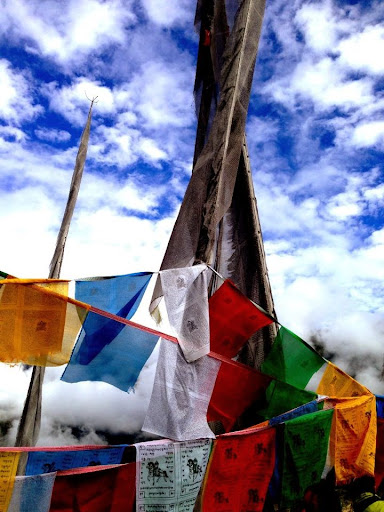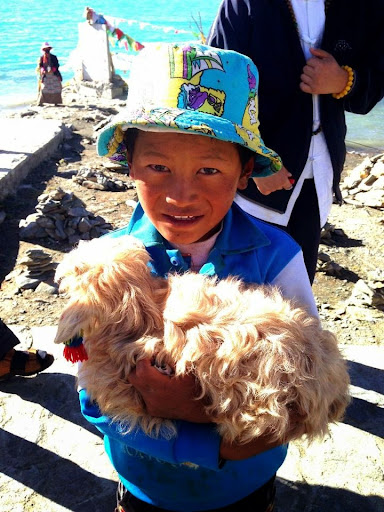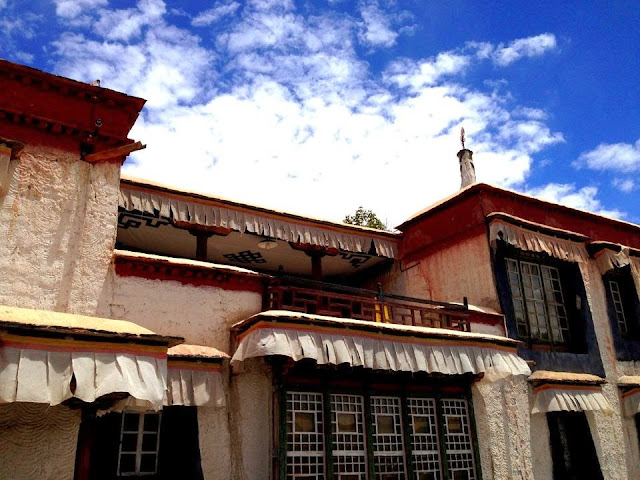Rethink Charity: What I learned from Tibetan Kids
I traveled to Tibet last summer for almost two weeks. While I was mesmerized by the heaven-like nature there, I was more intrigued by the living conditions Tibetans suffer, especially the children.


Me in traditional Tibetan clothing
Unlike many developed cities in China, such as Beijing, Shanghai, and Hong Kong, Tibet retains its pureness mainly because it is fairly remote from other cities, and its economic growth is not based on industrialization, but on tourism and medicine. The average altitude of Lhasa, the capital city of Tibet, is 11,975’. It was extremely hard for me to adapt such a high altitude and the unusual atmosphere; just like everyone else, I caught altitude sickness the first couple days after I landed in Tibet. I had to inhale oxygen from the equipment constantly, and I was told that it would be dangerous if I caught cold. The tour guide even told us a few tourists die in Tibet every year because of insufficient amount of the oxygen. Why would people risk their lives to visit Tibet then? Why is tourism so important for the Tibetan economy? And how can tourists help?


Potala Palace, home of the Dalai Lama
While I enjoy and respect the harmony of nature and religion in Tibet, poverty remains the principle issue there. What’s even more pathetic is that the poverty that I witnessed seemed to be a dead cycle that needs to be eradicated. In almost every stop that we made, Tibetan kids would gather around us begging for money, water, pencils, etc. I got fairly emotional seeing kids begging for the necessities that I always took for granted. I had sympathy for them, while I also felt the need to pursue dignity for the kids. No one at such a young age deserves to be inferior to others; meanwhile, no one is superior by having relatively more money than others.

Child in Tibet – I was charged 5 yuan to take this picture of this kid.
Often times, people regard themselves as philanthropists by donating money; I hear students on campus constantly advocating for donating to third world countries. Are they really bridging the gap between the disparities? I doubt it, at least not in the long run. The money that is given to the kids will evidently support their lives, but it implicitly initiates the continued dependency for the children. Just like the Tibetan kids that I encountered, begging for money is something they do on a daily basis, which is extremely unsustainable. We keep on giving money that presumably would help the kids ascend from status quo; we ought to suspend such actions and instead providing them with appropriate education and life skills, because that is the only weapon to fight against poverty. For instance, teaching someone the skills of establish a water system would have much more impact on a society instead of simply donating water constantly; having an efficient water system can not only resolve the water shortage, but also create jobs to help the community develop sustainably. Self-reliance decreases dependency. I like the idea of participatory tourism, and believe that we can only achieve the ultimate goal of education if travelers stay at the areas for long period of time (or keep returning). Education is a long and sophisticated process, and it needs bilateral interaction.
I’m not saying to stop giving, but to be cautious when we think we are helping others; as much as I love and care about the kids in Tibet and the economically disadvantaged around the world, I urge travelers to be farsighted when it comes to charity. Everyone deserves the dignity of being self-reliant. How can we help facilitate that?

Lin Yuhan is the Culture and Politics Editor at Wandering Educators, and a college student at the University of Pittsburgh




















